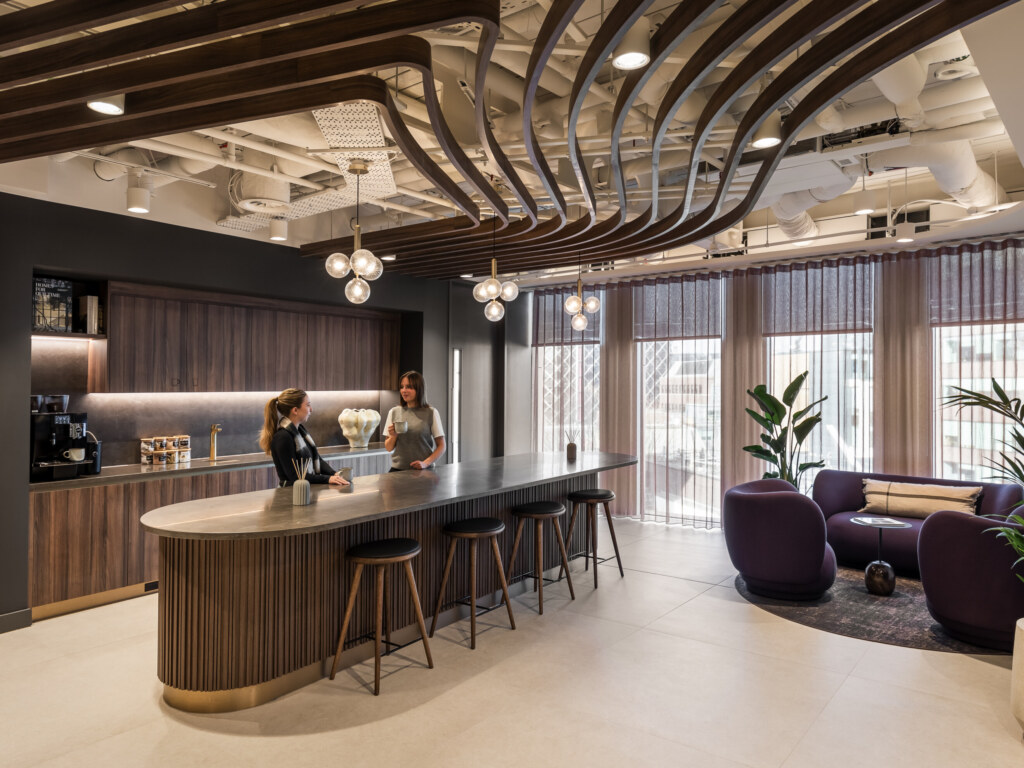-
After a record-breaking finish to 2024, where quarterly take-up exceeded 348,000 sq ft, the Birmingham office market experienced a quieter start to 2025. In H1, city centre take-up totalled 185,800 sq ft, which, at just under half of the total take-up from the same period last year, reflects a more measured pace of decision-making early in the year.
Despite this, overall market sentiment remains positive. Active enquiries and under-offer volumes remain healthy, particularly across the legal, public, and education sectors. Larger occupiers continue to focus on centrally located, sustainable space that aligns with hybrid working strategies and long-term recruitment goals.
Demand remains concentrated in Grade A space, which accounted for the majority of leasing activity in the early part of the year. However, availability of such space is critically low—estimated at just 2.3% of total stock—creating upward pressure on rents and intensifying competition for best-in-class accommodation.
-
Prime rent in Birmingham
Prime headline rents in Birmingham city centre rose to £45.50 per sq ft in Q2 2025—up from £43.00 last quarter—reflecting continued occupier demand for best-in-class space and the scarcity of available new stock. This represents a new high for the market and underscores the premium commanded by top-tier buildings with strong ESG credentials and high-quality amenity provision.
Download The Birmingham Rent Report for more details.
-

-
The cost of office space in Birmingham 2025
Location Grade A Rent (per sq ft) Grade B Rent (per sq ft) Birmingham Central (CBD) £42.00 - £45.50 £26.00 - £35.00 Digbeth £32.50 - £35 19.00 - £20.00 Solihull £28 - £32 £20.00 - £21.00 Eastside £28.00 - £29.00 £19.00 - £20.00 Westside £28.00 - £29.00 £19.00 - £20.00 These costs are a guide provided by local commercial property experts and rent reports. Costs are updated each quarter, and are subject to change.
-
Vertical market activity
Birmingham’s office market remains diverse, with a mix of public and private sector demand shaping activity. In the first half of 2025, the professional services sector led take-up, followed closely by government and public sector occupiers. These two segments together accounted for the majority of leasing activity across the city centre.
One of the most significant transactions of the year so far was Covalt’s 27,000 sq ft lease at 1 Victoria Square, the largest city centre deal in H1. This transaction illustrates growing interest from serviced office operators targeting centrally located, premium buildings. Similarly, Gilbanks’ 21,000 sq ft lease at 5 St Philips made a strong impact on Q1 totals, signalling continued growth in flexible workspace uptake among professional service users.
-

-
Demand for Grade A space
Demand for Grade A office space in Birmingham remains strong, driven by occupiers seeking sustainable, hybrid-ready buildings. However, availability is limited, with city centre vacancy at just 2.3%, creating upward pressure on rents and reducing options for larger occupiers.
New developments such as 3 Chamberlain Square, 19 Cornwall Street, and King Edward House are set to deliver later in 2025, helping to ease supply constraints. These schemes are expected to meet demand for energy-efficient, flexible, and amenity-rich space.
-

-
What tenants want
Organisations are currently focusing on two things: taking quality space and agreeing to more flexible terms. The increasing demand for flex space from corporate users is likely to influence the expansion of more flexible offices in the city due to the current and predicted demand. This is likely to affect the cost of office space in Birmingham and similar trends will affect prices in other big cities.
ESG has become the word – or acronym – on everybody’s agenda. Commercial property agents, landlords and occupiers alike are all assessing the relationship they have with their teams, how they use their office space and how this affects their property strategy.
-
Environmental, Social and Governance (ESG) has become an ethical priority for occupiers, enabling them to enhance their corporate decision-making and, as one of many benefits, make their organisations appealing to existing and potential talent.
Another key trend behind this activity is that more companies are relocating from London to Birmingham to set up their offices. This shift is helping to diversify the city as an increasing number of national and international firms are choosing to open major offices in Birmingham. With a broader range of occupiers being reported in the quarterly transactions, the resilience of the market is being proven; something that has been previously acknowledged in Solihull and the M42 corridor.
-

-
The outlook for Birmingham office space
Birmingham’s office market is expected to gain momentum as 2025 continues, supported by the completion of key developments and a pipeline of active requirements. While take-up has been modest so far this year, the fundamentals remain strong: demand for high-quality, sustainable space continues to outpace supply, and occupiers are increasingly prioritising future-ready workplaces.
-

-
New completions such as 3 Chamberlain Square, 19 Cornwall Street, and King Edward House are set to inject much-needed Grade A stock into the city centre. These schemes are likely to attract professional services, public sector bodies, and flex operators seeking modern, ESG-aligned buildings with strong location credentials.
As more organisations realign their portfolios to reflect hybrid working and ESG objectives, the flight to quality will intensify, widening the gap between prime and secondary space. Rents for best-in-class space are expected to remain under upward pressure, particularly as vacancy in top-tier stock remains tight.
Birmingham’s competitive pricing, strong talent pool, and growing profile as a regional hub continue to draw national and international occupiers. With new supply on the horizon and occupier confidence improving, the city is well-positioned to capture a broader share of future demand.
For further advice on the city’s office market, contact our regional workplace experts in Birmingham. They can guide you through both tenant and landlord markets in greater detail.
-
Contact us
Get in touch to discuss your office space costs in Birmingham
020 7553 9500
info@oktra.co.uk
-
Related content
-
Want updates on similar new content? Be the first to hear about new office space insights when you join our mailing list.
JOIN THE LIST




